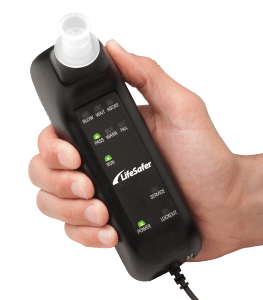 When you have an ignition interlock requirement as a result of a drunk driving conviction, you probably want to get through the experience as quickly as possible. Since you have the ignition interlock device (IID), you already know you’re not going to be drinking and driving again (not that you would, anyway), so your own compliance isn’t a factor in delaying its removal. It should be a smooth process, especially with the right IID service provider, and you’ll be back on the road to sober driving before you know it, as long as the device itself meets all requirements.
When you have an ignition interlock requirement as a result of a drunk driving conviction, you probably want to get through the experience as quickly as possible. Since you have the ignition interlock device (IID), you already know you’re not going to be drinking and driving again (not that you would, anyway), so your own compliance isn’t a factor in delaying its removal. It should be a smooth process, especially with the right IID service provider, and you’ll be back on the road to sober driving before you know it, as long as the device itself meets all requirements.
So, how do you know the device you’re using is the right type of IID?
The National Highway Transportation Safety Administration has (NHTSA) outlined its recommendations for the different aspects of an ignition interlock program, including device specifications. Based upon research, these recommendations provide the best outcome for you during your IID requirement period:
- A breath alcohol sensor that will “lockout” your attempt to drive your car if your blood alcohol content (BAC) tests above a pre-determined level (usually .02 – .025 BAC).
- A “rolling retest” every 20-30 minutes to ensure you are the person driving, or that the driver of your car is sober.
- A tamper-proof system that can detect any device circumvention or bypass and records the information.
- Data storage and reporting capability to log your BAC, whether you’re driving the vehicle, and other considerations to prove your compliance in an ignition interlock program.
When you have an ignition interlock requirement, you want to do your part to ensure that you are able to fulfill all of the court’s directives, including having the right type of equipment. Your ignition interlock service provider should be able to explain the details of your device, how the monitoring and reporting works, and ensure you that the device is compliant with your state’s program. The time you spend with an IID doesn’t have to be frustrating, and once you’ve completed your sentence, you will be back on the road to better, more responsible choices.
Source: Key Features for Ignition Interlock Programs [PDF]

Leave a Reply
You must be logged in to post a comment.